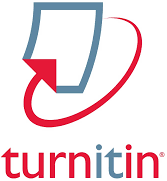Effectiveness of Bitter Melon (Momordica charantia) Solution for Masculinization of Siamese Fighting Fish (Betta splendens) Through Larval Immersion Method
DOI:
https://doi.org/10.29303/jfh.v4i3.5797Kata Kunci:
Betta, Bitter Melon, Larva, SexAbstrak
Siamese fighting fish (Betta splendens) is one of the fisheries commodities in great demand because it has an attractive physique and relatively high economic value. The increasing market demand for male Betta means a method is needed to produce male offspring en masse. This research aimed to determine the effect of bitter melon (Momordica charantia) solution on the male sex ratio of Betta by immersion of larvae in different concentrations. This research used an experimental method with a completely randomized design (CRD), which included four treatments with three replications, namely control treatment, P2 treatment with a concentration of 1.5 ml/l, P3 treatment with a concentration of 3 ml/l, and P4 treatment with a concentration of 6 ml/l. The data obtained was analyzed using the ANOVA method. If the data analysis showed a significant effect, it was carried out using Duncan's advanced test. The research showed that the treatment applied had a real influence on the percentage of male Betta but did not significantly affect the survival rate. The highest sex percentage value for Betta was found in treatment P4 (6 ml/l), which was 77%.Unduhan
Diterbitkan
Cara Mengutip
Terbitan
Bagian
Lisensi
1. The copyright of this journal belongs to the Editorial Board, based on the author's consent, while the moral rights of the publication belong to the author(s).
2. The formal legal aspect of journal accessibility refers to the same Creative Common Attribution + Noncommercial + ShareAlike (CC BY-NC-SA), implying that publication can be used for non-commercial purposes in its original form.
3. Every publication (printed/electronic) is open access for educational, research and library purposes. In addition to the objectives stated above, the editorial board is not responsible for copyright infringement















